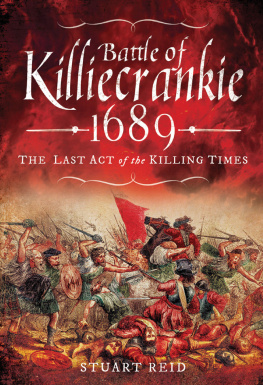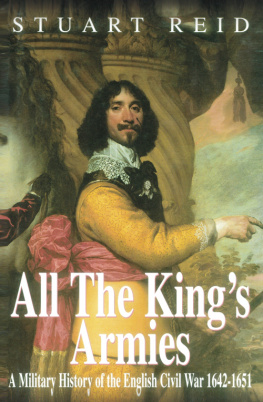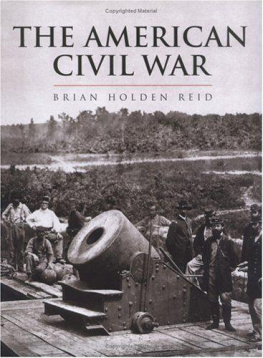The Vistas of American Military History 1800-1898
A team of leading American military historians here investigate the factors that shaped the United States Army in the nineteenth century.
Throwing new light on its history, this deeply researched book explores a multiplicity of themes. These include the social structure, command system and relationship with civil power, which are all important in assessing its efficiency and behaviour in war. Also considered is the way the army is depicted in military literature and cinema, which affects its social portrait.
Deliberately exploring neglected themes, this key work includes discussion on:
the roles of the many volunteer colonels in the Mexican War, 1846-48
Robert Wettemann and the alleged isolation of the US Army in the nineteenth century
John Fords famous cavalry trilogy of motion pictures.
Containing so much food for thought for students of US history and military history, this is an entertaining as well as instructional book.
This book was previously published as a special issue of American Nineteenth Century History.
Brian Holden Reid is Professor in the Department of War Studies, Kings College, UCL, London, UK
Joseph G. Dawson III is Professor of History at Texas A&M University, College Station, Texas.
The Vistas of American Military History 1800-1898
Edited by Brian Holden Reid & Joseph G. Dawson III
Published 2007 by Routledge
2 Park Square, Milton Park, Abingdon, Oxon OX14 4RN
52 Vanderbilt Avenue, New York, NY 10017
Routledge is an imprint of the Taylor & Francis Group, an informa business
Copyright 2007 Taylor & Francis
All rights reserved. No part of this book may be reprinted or reproduced or utilised in any form or by any electronic, mechanical, or other means, now known or hereafter invented, including photocopying and recording, or in any information storage or retrieval system, without permission in writing from the publishers.
Notice:
Product or corporate names may be trademarks or registered trademarks, and are used only for identification and explanation without intent to infringe.
British Library Cataloguing in Publication Data
A catalogue record for this book is available from the British Library
Library of Congress Cataloging in Publication Data
A catalog record for this book has been requested
Typeset in Minion by Genesis Typesetting Ltd, Rochester, Kent
ISBN 13: 978-0-415-37319-7 (hbk)
ISBN 13: 978-1-138-88199-0 (pbk)
CONTENTS
Brian Holden Reid
William B. Skelton
Robert Wooster
Robert P. Wettemann, Jr.
Samuel J. Watson
Joseph G. Dawson III
Glenn Robins
Frank J. Wetta and Martin A. Novelli
Brian Holden Reid
The following collection of essays on American military history, or more accurately, on the interpenetration of the military in American life more generally, has been aimed at scholars of US history who are not military historians. This group might include those who are interested in military affairs but would not regard themselves as specialists, those who have no great interest in the subject, and indeed those who would not regard themselves as interested in the matter at all (at any rate until they open these pages, it is hoped). Even a cursory glance at this book should reveal how the study of the military dimension has an impact upon the study of the perennial and urgent issues that engage historians of the United States in the nineteenth century.1
Military historians in the US are not alone in thinking themselves an unappreciated and even shunned minority whose work is at best under-valued, at worst treated as if it should be distributed in the proverbial plain, brown paper wrappings. Younger American military historians sometimes express envy at the high public profile of such scholars in Britain, and the honors lauded on figures like Michael Howard and John Keegan. They also feel that new directions in the subject tend to be pioneered in Britain. Strong grounds exist for believing that such a defensive outlook is unnecessary (and it is absent from the work that appears here). Two of the most distinguished American historians, James M. McPherson and David Hackett Fischer, write excellent military history within a social, political, economic and cultural context; they both lack formal training in the subject but are attracted to military affairs because of their intrinsic importance.2
The authors of these studies are a blend of the senior and established with younger, rising figures who are sure to make a profound impact on the subject. It is perhaps as well to clarify at the outset what they are not writing about. There are no essays on defense policy or strategy or their correlation with foreign policy. This is an area that has attracted political scientists who explore the relationship between federal institutions and the American propensity either to make war or to desist from it.3 Indeed, there is virtually nothing on operational military history, the battles and campaigns in which Americans were engaged during this period (including the momentous actions of the Civil War). The last two contributions, however, do reflect upon the way in which the experience of war has been recorded, embellished and represented in both written and visual form. Operational military history is, of course, a perfectly legitimate area of study: we cannot hope to understand either military men (and increasingly women, too) or their institutions unless we study, analyze and assess their conduct of warfare after all, their raison dtre in the first place. Indeed, straight-forward operational military history, spearheaded by the final works of the late Russell F. Weigley, has undergone a major revival in recent years.
The approach adopted here is more concerned with delineating the significance of the military dimension for American society. Thirty years ago or more such an approach would have been branded a contribution to the new military history, that which seeks to explore the relationship between war and society. The label new is immediately appealing, suggestive of not just novelty but innovation, resulting, it is assumed, in sharper perception and understanding. But such a label is also transient, for the approach is no longer new but has garnered some luscious fruits; also historians should hesitate before assuming that it is the only way to explore the American military past. Certainly, no such claims are made here. One essay, for instance, continues to reflect the strong biographical tradition that has so characterized the study of military history.
This Introduction has not merely sought to summarize the contents of each contribution, but also attempts to establish the links between them and explore the issues they raise, and offers a signpost that will direct attention towards areas of historical controversy (especially those areas where the contributions are likely to disagree). It thus aims to review the subject area generally and offer thoughts on subjects that still require research or reappraisal.
In seeking to establish and clarify the links between the military and American society, the contributors (all of whom are American except for one of the editors) are reflecting some deep currents in American thought. The philosopher, William James, wrote an influential essay before World War I entitled, A Moral Equivalent of War, in which he argued that the moral virtues associated with waging armed conflict were an adhesive that bound disparate societies together. He thought that they should be introduced to invigorate the arts of peace not least the challenges posed by irrigation and land reclamation, the construction of roads, and all the measures that improve what historian Merle Curti terms our essentially unplanned culture.4 But the Introduction will attempt to explore these matters in a comparative way, not simply because the comparative approach assists in the development of broader perspectives, but also because the central features of the American military tradition were inherited from Great Britain. Consequently, the comparison with the British Army is the most instructive.5











